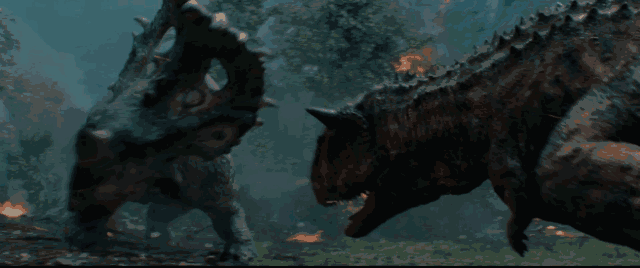Deciphering the Wuhan Museum of Nature: the treasures of the Ten Town Pavilions and the two Secret Books are hard for people to look away.

Go to the cinema to see Jurassic World 2?
Special effects dinosaurs don't have close contact with real dinosaurs!
To see Li Yifeng's "Animal World"?
There are more than 3000 animals in Wuhan Nature Museum!
Going to East Africa to watch the animal migration next month?
No, Wuhan Nature Museum shows the great migration of animals in East Africa!
The first issue of our "Reading Nature" column began with the book "one Flower, one World-the good Life of the Garden Family". Since its launch, we have received a lot of voices from "readers".
The reading of "one Flower, one World" is still going on. in order to feedback the enthusiasm of the "readers", the column "Reading Nature" will enter the Wuhan Museum of Nature. Readers can not only show their voices in the Green Life School of Mini Program, but also walk into the Wuhan Nature Museum to really feel the changes of the river and the charm of nature.
Looking for the reader ing
"reading audio to Xiao Qi is not only an opportunity to visit for free, but also a stage where you like nature and love to read aloud, but also a different period of parent-child time!"
↓ talked privately about Xiao Qi's registration event, and more surprises are waiting for you.
Wuhan Nature Museum as the world's first museum with the theme of the river, what is the treasure of the town shop?
Not to brag, heisi you, Wuhan Nature Museum not only depends on the appearance to win, but also full of "talent", come on, let's go see ~
Swim
Play
Finger
South
Ahem, after entering the garden, walk for 15 minutes (about 1500 meters) to Beilin Hall (next to the Yangtze River Civilization Hall).
Bei Lin Pavilion has three floors, the main exhibition hall is on the first and second floors, and the third floor is the temporary exhibition hall.
At present, the order of the tour route is:
The vicissitudes of the river-- the precious spirit of the river-- meditation on the river-- the mystery of the river-- the popular science space, all the themes revolve around the "river".
The preface hall at the entrance, from the world-famous philanthropist Kenneth? Eugene? The introduction of Mr. Beilin (donor) begins. Born into a poor family, he started doing odd jobs at the age of 6 and bought his first car at the age of 15. The rebellious experience is simply the best motivational model for children.
Next, it's time to find the treasure of the town hall--
Town hall
The treasure
1. The largest fossil wall of dragon footprints
The dragon footprint of the Beilin Dahe Life Museum of Wuhan Nature Museum is 15.3m long and 8m wide, covering an area of 120m2, which is rare in China.
Dragon is a general term for reptiles, including dinosaurs, in paleontology. Footprint fossils are "close-ups" recorded by nature for vertebrate activities with natural video recorders, and the conditions for their formation and preservation are very stringent. But the relic seems to reproduce the scene of chasing and fighting between animals 200 million years ago, with "dragons" walking by the lake, fish flying at the shallow bottom, and arthropods crawling, which is an important data for deciphering the evolution of vertebrates in the late Triassic.
Town hall
The treasure
two。 Longest silicified wood
The silicified wood of the Beilin Dahe Life Museum of the Wuhan Nature Museum was unearthed in Qitai County, Xinjiang, and was made from tall trees of the Jurassic period. The tree shape is well preserved, the wood structure is clear, the total length is about 37 meters, and the maximum diameter of the root is 2.7m. It is extremely spectacular and is the longest silicified wood on display in the Chinese Museum.
Silicified wood, a general name for fossil trees, was mostly formed in the Jurassic period 130 million years ago. After the ancient trees such as pine and cypress and ginkgo were buried by sediments, after a long process of fossilization, they were filled and replaced by minerals such as silicon dioxide or calcium carbonate and iron sulfide, forming silicified wood.
Town hall
The treasure
3. Giant rhinoceros fossil skeleton
The giant rhinoceros skeleton in the Beilin Dahe Life Museum of Wuhan Nature Museum is 8.8m long and 4.2m high, and weighs more than 20 tons before death. Real bones account for more than 90 per cent of the total. It is the largest recorded rhinoceros fossil skeleton with the highest integrity and repair.
Giant rhinoceros is a large mammal that lived 20 million years ago, and it is also a rhinoceros endemic to Asia. The giant rhinoceros bone fragments come from the folk collection of Ningxia Hui Autonomous region, which is repaired and installed by the Tianyu Museum.
Town hall
The treasure
4. A tiger cat that resembles a tiger but not a tiger.
Tiger cat, is a very beautiful wild cat, belongs to the carnivorous cat family tiger cat genus, mainly distributed in Central and South America.
A seemingly ordinary wildcat is rated by biologists as one of the most difficult cats to describe, because the patterns on the tiger cat are so complex and diverse, including the stripes of the tiger, the plum blossom spots of the leopard and the solid point of the cheetah.
Specimens of tiger cats from the Beilin River Life Museum of Wuhan Nature Museum are on display in the Amazon River.
5. Arctic puffer
Arctic puffin, a member of the genus Pagoda of the order h é ng, has a bright mouth, a parrot-like mouth, a body similar to a duck, and a rickety walk, known as a "marine clown." They live in the North Atlantic, like to eat fish and come ashore during the breeding season.
The mating system of Arctic puffins is monogamy, often digging holes under grassy slopes or under rocks to build nests. Both husband and wife are loyal to their nests and return to the same place to breed every year. It only breeds once a year and produces only one egg weighing up to 60 grams at a time.
Specimens of Arctic puffins from the Beilin River Life Museum of Wuhan Nature Museum are on display in the Yenisei River.
6. The largest carnivorous marsupial
Tasmanian devils, the only living species of the genus Tasmania of the family Mustelidae, are the largest carnivorous marsupials in the world, distributed only on the island of Tasmania in Australia. The fur is black with irregular white spots on the chest and buttocks. The average body length is 65 cm and the weight is 8 kg. Rest in bushes or caves during the day, prey at night, hearing, smell and vision are very sensitive. Female Tasmanian devils have pouches, opening downward, unlike kangaroos.
Specimens of Tasmanian devils from the Beilin River Life Museum of Wuhan Nature Museum are on display in the Murray River.
7. A white lion who is not good at camouflage
The white lion, the all-white lion, is not a particular species or subspecies, but another color type of African lions, belonging to the carnivorous cat leopard genus, which lives mainly in sub-Saharan Africa. The number in the wild is very small, because the color is too eye-catching, it is not easy to camouflage, and it is not easy to survive.
The White Lion family of the Beilin River Life Museum of Wuhan Nature Museum is on display in the Nile.
8. The largest elephant
The African prairie elephant, a genus of African elephants of the family Coleoptera, is the largest elephant in the world, with an average height of 3.2 meters and a weight of 6 tons. it is distributed in sub-Saharan Africa. It eats plants and can eat whole trees. it plays an important role in the spread of plant seeds.
The African prairie elephant in the Beilin River Life Museum of Wuhan Nature Museum is 5.35m long and 3.3m tall. The specimen is on display in the Nile exhibition area.
9. Gorilla
The West African lowland gorilla in the Beilin River Life Museum of Wuhan Nature Museum is a subspecies of West African gorillas and belongs to the genus of primates. It mainly lives in the forest environment of central and western Africa and is extremely endangered. The specimen is on display in the Nile-Mara River.
Gorillas, commonly known as gorillas, are the largest living primates, strong and powerful, standing up to 1.8 meters tall and weighing 270 kilograms.
After adulthood, the back hair of male gorillas turns silver gray, so the gorillas are also called silverback gorillas. Often active on the ground, mainly vegetarian. It has a long life span and can live to about 40 years old in the wild. The reproduction rate is so low that a female gorilla can only successfully raise one offspring every 6-8 years.
10. The critically endangered Indo-Chinese tiger
Indo-Chinese tiger, a subspecies of tiger, belongs to the genus Leopard of Carnivora felidae. It is the tiger subspecies with the fastest decline in population and is now extremely endangered. Indo-Chinese tigers mainly live in broad-leaved forests of South and Southeast Asia, live alone, and feed on medium to large hoofed animals such as wild boars, deer and buffaloes. It is smaller than other tigers, with a length of 2.55 m-2.85 m and a weight of 150-195 kg. Due to the destruction of habitat, most of the wild populations are facing a serious survival crisis.
Specimens of Indo-Chinese tigers from the Beilin Great River Life Museum of Wuhan Nature Museum are on display in the Mekong River.
In addition to the treasures of these 10 town pavilions, Wuhan Nature Museum is also different from other natural museums in the country. There are also "two secret books".
One of the biggest secrets:
It is composed of Yangtze River Civilization Museum, Beilin River Life Museum of Wuhan Nature Museum and 213.77 hectares of natural landscape of Wuhan Garden and Expo Garden. The mode of running a nature museum with "one garden and two pavilions" is very rare.
Two secret books:
The Beilin Great River Life Museum of Wuhan Nature Museum takes the great river and life as the exhibition theme, which is divided into several sections: "Great River vicissitudes", "Great River Zhenling", "Great River contemplation" and "popular Science Space". Dialogue with the Yangtze River on the Amazon, Mississippi, Yenisei, Ganges, Lancang-Mekong, Murray, Danube, Mara-Nile and other major rivers of the world It not only shows the biodiversity of the major river basins in the world, but also properly solves the relationship between the Yangtze River Civilization Museum and the Beilin River Life Museum of the Wuhan Natural Museum, making the permanent exhibition "Song of the Yangtze River, Journey of Civilization" and "Song of the Great River. the Journey of Life complement and complement each other.
When △ meets a commentator, he can sit by and listen.
Wuhan Nature Museum is a good place to visit.
Take the children to teach and have fun
Go with your family and feel the beauty and value of life.
Go with your lover and experience in a life like dust
How hard it is to meet you
……
Want to get tickets for a field visit?
Just be a reader!
- Prev

How to distinguish between Jin Gui, Shen Xiang Gui, Siji Gui and Dan Gui? What are their own characteristics?
Sweet-scented osmanthus is a common name for many species of Oleaceae in China, but there are many horticultural varieties of sweet-scented osmanthus, among which the most common and most popular varieties are Jin Gui, Shen Xianggui, Dangui and Siji Gui. Then Jin Gui, Shen Xianggui, Dan Gui and Siji Gui each have.
- Next

The survey found that such women are the most attractive.
The biggest business card of a woman is that your temperament is fashionable and easy to become gaudy, and a little more casual is considered slovenly or rigid. To dress well is the ability, and to dress well all the time is the absolute competitiveness. It reflects your taste and people.
Related
- Wuhan Hospital Iron Tree Blooming Result Was Instantly Frightened by the Gardener Master
- Which variety of camellia is the most fragrant and best? Which one do you like best?
- What is the small blue coat, the breeding methods and matters needing attention of the succulent plant
- Dormancy time and maintenance management of succulent plants during dormancy
- Minas succulent how to raise, Minas succulent plant pictures
- What are the varieties of winter succulent plants
- How to raise succulent plants in twelve rolls? let's take a look at some experience of breeding twelve rolls.
- Attention should be paid to water control for succulent plants during dormant period (winter and summer)
- Watering experience of twelve rolls of succulent plants
- Techniques for fertilizing succulent plants. An article will let you know how to fertilize succulent plants.

